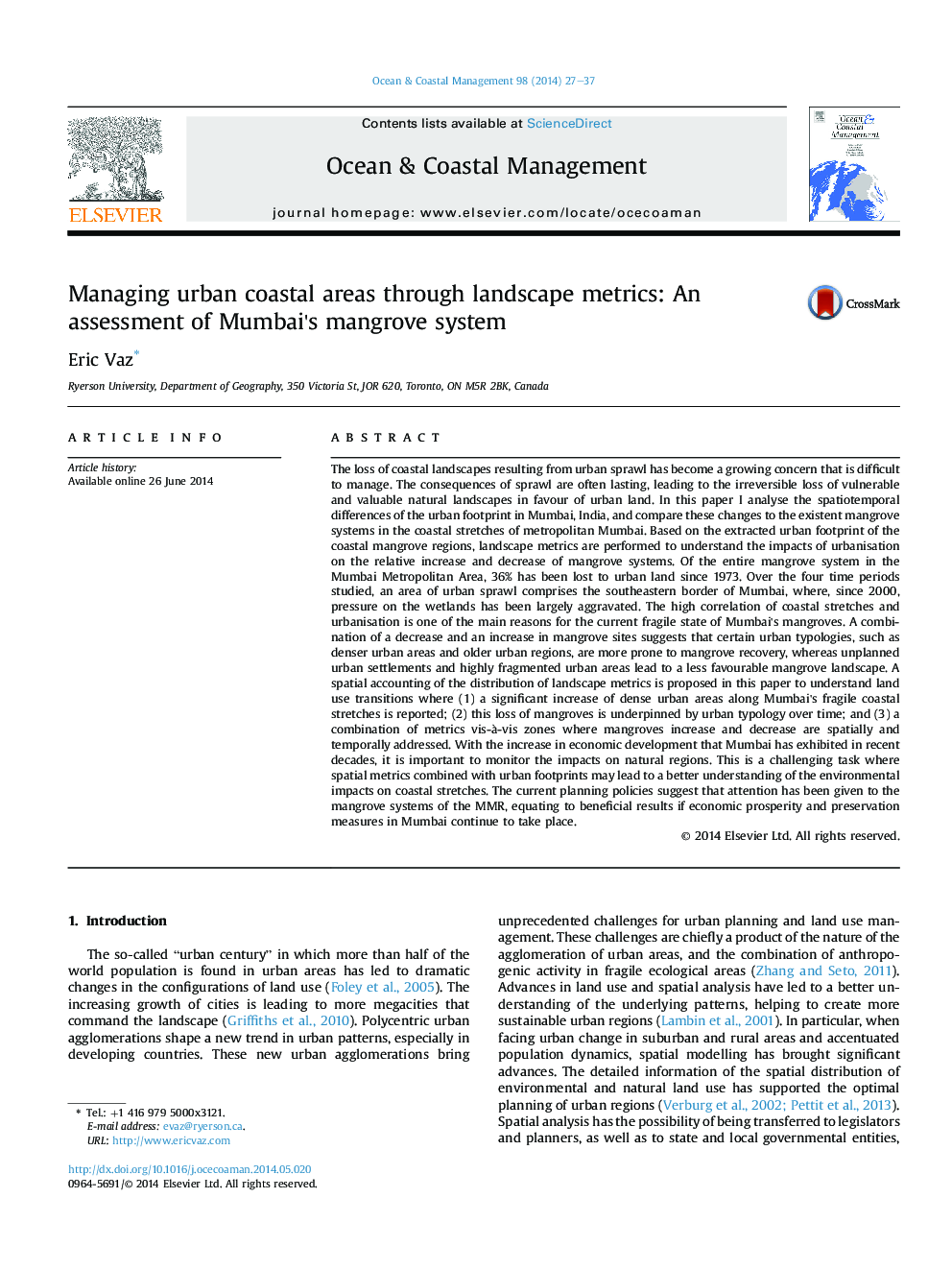| کد مقاله | کد نشریه | سال انتشار | مقاله انگلیسی | نسخه تمام متن |
|---|---|---|---|---|
| 1723658 | 1520528 | 2014 | 11 صفحه PDF | دانلود رایگان |
• I examine the changes in Mumbai's mangrove systems in the last decades.
• I assess the consequences on anthropogenic land on the vulnerability of coastal regions.
• Urban sprawl is quantified and measured in line with mangrove loss for Mumbai.
• Coastal regions can benefit from an ex-ante approach of understanding land use dynamics.
• Landscape metrics provide valuable tools to understand and manage urban coastal regions.
The loss of coastal landscapes resulting from urban sprawl has become a growing concern that is difficult to manage. The consequences of sprawl are often lasting, leading to the irreversible loss of vulnerable and valuable natural landscapes in favour of urban land. In this paper I analyse the spatiotemporal differences of the urban footprint in Mumbai, India, and compare these changes to the existent mangrove systems in the coastal stretches of metropolitan Mumbai. Based on the extracted urban footprint of the coastal mangrove regions, landscape metrics are performed to understand the impacts of urbanisation on the relative increase and decrease of mangrove systems. Of the entire mangrove system in the Mumbai Metropolitan Area, 36% has been lost to urban land since 1973. Over the four time periods studied, an area of urban sprawl comprises the southeastern border of Mumbai, where, since 2000, pressure on the wetlands has been largely aggravated. The high correlation of coastal stretches and urbanisation is one of the main reasons for the current fragile state of Mumbai's mangroves. A combination of a decrease and an increase in mangrove sites suggests that certain urban typologies, such as denser urban areas and older urban regions, are more prone to mangrove recovery, whereas unplanned urban settlements and highly fragmented urban areas lead to a less favourable mangrove landscape. A spatial accounting of the distribution of landscape metrics is proposed in this paper to understand land use transitions where (1) a significant increase of dense urban areas along Mumbai's fragile coastal stretches is reported; (2) this loss of mangroves is underpinned by urban typology over time; and (3) a combination of metrics vis-à-vis zones where mangroves increase and decrease are spatially and temporally addressed. With the increase in economic development that Mumbai has exhibited in recent decades, it is important to monitor the impacts on natural regions. This is a challenging task where spatial metrics combined with urban footprints may lead to a better understanding of the environmental impacts on coastal stretches. The current planning policies suggest that attention has been given to the mangrove systems of the MMR, equating to beneficial results if economic prosperity and preservation measures in Mumbai continue to take place.
Journal: Ocean & Coastal Management - Volume 98, September 2014, Pages 27–37
